Bjørn Lomborg is a well-known media personality who argues that there are more important priorities than reducing emissions to limit global warming. In a recent controversy centering on him, the Australian government (known for its contradictory position on climate change) offered the University of Western Australia (UWA) $4 million to make Lomborg professor – which UWA first accepted, but then after massive protest from its staff and students refused. The Australian government was quick to label it a “freedom of speech” issue that Lomborg should get a university position, and vowed to find another university that would host him. However, free speech doesn’t guarantee everyone a university position; there are also academic qualifications required.
A translation of this post in Spanish is available here.
Lomborg’s publication record
Let us thus start by looking at Lomborg’s track record in the scientific literature. This is where original research results, i.e. new findings, are published. One can look this up in the Thomson Reuters Web of Science, the main data base of the scientific literature. According to this Lomborg only has published 20 papers, of which 15 have never been cited by anyone (Fig. 1). The number of citations shows whether any other researchers in the world have found the results interesting enough to discuss them in their own papers (whether critically or otherwise). Only one of Lomborg’s papers has a reasonable number of citations: 42. This is on a problem of game theory, apparently resulting from his PhD thesis. On closer inspection, the other articles appear to be merely opinion pieces that made it into the Thomson Reuters data base by appearing in periodicals that are indexed there, including Forbes, Foreign Affairs or New Scientist.
Figure 1 Lomborg’s citation record in Web of Science, as viewed on 22 Aug 2015. The ten most-cited papers (out of 20) are listed. Click to enlarge.
That means that apart from one paper in 1996, Lomborg has never published anything in any field of science that was interesting or useful to other scientists, or even just worth the bother of contradicting in the scientific literature. PhD students at many universities are expected to publish two or three original research papers from their PhD, and without that, they are generally uncompetitive for a postdoc position.
For comparison I also show a snapshot of the publication record of an economist who really studies the economics of climate change: Gary Yohe (Fig. 2) – to give readers unfamiliar with bibliometric data an idea of what they look like for a regular scientist at professorial level. One number illustrates the point: Lomborg’s papers were cited once last year, Yohe’s 608 times.
Figure 2 Gary Yohe’s citation record in Web of Science, as viewed on 27 Aug 2015. The ten most-cited papers (out of 93) are listed. Click to enlarge.
Lomborg’s public comments on sea-level rise
I study sea-level rise, and I first noticed Lomborg’s sea-level comments in October 2008, when he published an opinion piece in the Guardian (via Project Syndicate) in which he wrote:
Since 1992, we have had satellites measuring the rise in global sea levels, and they have shown a stable increase of 3.2mm per year (1/8 of an inch) – spot on compared to the IPCC projection. Moreover, over the last two years, sea levels have not increased at all – actually, they show a slight drop. Should we not be told that this is much better than expected?
The first sentence is a debating trick frequently used by those wanting to downplay climate change: Lomborg compares the observed past rise with average projections for the future. However, in the projections sea level rise accelerates over time in response to global warming, so if the rate of rise is already now as high as models expect only in several decades, this is not “spot on”. When comparing like with like, i.e. the same time interval, it has been shown both in the journal Science and in the 4th IPCC report (published 2007) that the observed rate of rise greatly exceeded the projections available at the time of Lomborg’s writing. (In the 5th IPCC report the projections are about 60% higher than in the 4th and now do match past observations.)
Lomborg’s second sentence is also a classic debating trick of climate skeptics: confuse the public by cherry picking some short interlude which goes against the long-term trend (Fig. 3). This is always possible with noisy geophysical data.
Figure 3 The data behind Lomborg’s claim of falling sea level. Image courtesy of Greg Laden’s blog.
Ironically, the title of Lomborg’s article was “Let the data speak for itself”, but he did not show the data. (I did later in a response – for those wanting to read more on my exchange with Lomborg, see the Appendix below.)
Misrepresentation of IPCC reports
Lomborg has quite a history of misrepresenting what is written in IPCC reports. I noted this already in the Guardian exchange about the 4th IPCC report. Lomborg has likewise seriously misrepresented what IPCC says about sea level in its latest (5th) report. In a newspaper column for Project Syndicate, which got published in newspapers in many countries, he wrote:
For sea-level rise, the IPCC now includes modeling of glacier responses of 3-20 centimeters, leading to a higher total estimate of 40-62 cm by century’s end – much lower than the exaggerated and scary figure of 1-2 meters of sea-level rise that many environmental activists, and even some media outlets, bandy about.
Compare this to what the IPCC actually writes about sea level in its Summary for Policy Makers:
For RCP8.5, the rise by the year 2100 is 0.52 to 0.98 m.
(RCP8.5 is a scenario with unmitigated rise in greenhouse gas emissions.)
For the lowest emissions scenario RCP2.6 (which involves drastic emissions reductions starting in a few years and leading to zero global emissions by 2070) the best-estimate sea-level rise by the year 2100 given by IPCC is 44 cm. The emissions reductions needed to keep sea-level rise so moderate is the kind of scenario that Lomborg has devoted his career to prevent. Telling his readers that sea-level rise might just be 40 cm so they should not worry, without telling them that this low number would require massive mitigation efforts, is rather misleading.
The risk of a rise of 1-2 meters is dismissed by Lomborg as “exaggerated” and “bandied about” by “environmental activists and even some media outlets”. But surely Lomborg knows that a large part of the sea-level expert community considers this a serious risk, as documented in a number of peer-reviewed scientific publications? The thoroughly peer-reviewed US National Climate Assessment, published some months before Lomborg’s newspaper article, summarizes the state of science on future sea level in the following graph (Fig. 4).
Figure 4 Sea level rise according to the US National Climate Assessment (2014). The high end scenario of 6.6 feet equals 2 meters of rise between the years 2000 and 2100.
And an expert survey in which 90 sea-level experts (in contrast to Lomborg, all with a good track-record of research in this area) took part has come up with this distribution for the upper reaches of sea-level rise by 2100 (Fig. 5).
.
Figure 5 Distribution of the experts’ answers to the upper limit of the ‘likely’ range for the RCP8.5 scenario by the year 2100. Many experts consider a global sea-level rise between 1 and 2 meters quite possible in case of unmitigated greenhouse gas emissions.
Cynical misinformation offered to developing nations
Lomborg’s message to the newspaper readers has thus nothing to do with a fair portrayal of how much sea-level rise the scientific community expects. Rather it is a distortion and blatant attempt at downplaying future sea-level rise. Looking at Lomborg’s many other Project Syndicate columns shows that this is not a singular case but a regular pattern in his columns. This is all the more irresponsible given that Project Syndicate opinion pieces are widely reprinted by newspapers in developing nations, where reporting on the actual state of science is often poor and where people are most vulnerable to the impacts of climate change.
Earlier this year Lomborg travelled to Bangladesh to tell people there that “focusing on global warming instead of child nutrition is quite frankly almost immoral” (his standard false dichotomy). He further claimed:
The Dutch has shown us 200 years ago, you can handle sea level rise fairly, easily and cheaply, you can do the same thing here and you will do the same thing here.
It only takes a look at Google Earth to see how preposterous the comparison of Holland and Bangladesh is (Fig. 6). The latter coastline is vastly more difficult to defend against rising seas, and unlike Holland it is in the path of tropical cyclones.
Figure 6 Coastlines of Holland (top) and Bangladesh at similar scale. Holland expects to spend 1.2 to 1.6 billion Euro (1.4 to 1.8 billion US$) per year until 2050 to upgrade its already well-established coastal defences – but it has a straight, easy-to-defend coastline with only a small river delta region. Bangladesh in contrast is largely a river flood plain with major problems draining the monsoonal waters to the sea (closing the coast with a huge dike is not an option) combined with storm surges from tropical cyclones. [See more in Appendix 2.]
Lomborg’s cynical attitude towards the victims of sea-level rise could hardly be better illustrated by another Project Syndicate op-ed he wrote. There he dismisses even a catastrophic 20-foot sea-level rise (6 meters – a plausible outcome of unmitigated global warming in a few centuries) which would inundate about 16,000 square miles of coastline where more than 400 million people currently live:
That’s a lot of people, to be sure, but hardly all of mankind. In fact, it amounts to less than 6% of the world’s population – which is to say that 94% of the population would not be inundated.
What a cavalier way to dismiss the plight of 400 million people, coming from a rich Dane who in 2012 received a salary of US$ 775.000 in the US via conservative foundations!
Conclusion
To answer the question posed in the title: No, I do not think Lomborg is a scientist who just happens to have a different opinion from the majority. First of all, there is very little indication that he is actually working as a scientist, given his near-zero scientific track record since his PhD work according to Thomson Reuters Web of Science. Second, the arguments he presents to the wider public on sea-level rise can hardly be seen as made in good faith – rather, they appear to me carefully crafted (and admittedly rather eloquent) distortions, aimed to deceive his lay audience about the seriousness of the threat. In short, I would consider much of Lomborg’s writing propaganda.
Ever since his “Skeptical Environmentalist” book Lomborg has a simple, single message: don’t worry about reducing fossil emissions. Whether he denies or plays down the seriousness of global warming, sings the praises of adaptation, advocates to prioritize other problems or pushes geoengineering, the message is always the same: anything is better than phasing out fossil fuels.
As seen by the lack of citations, this message has zero credibility or impact in the scientific community. After all, scientists can judge the merits of the arguments. Unfortunately, Lomborg’s propaganda message is not only popular with fossil fuel interests, but continues to get ample space in the media.
Appendix
I did not want to burden the main article with too much detail, so here is how my exchange with Lomborg in the Guardian went on. In response to my complaint about the cherry-pick, Lomborg wrote:
Rahmstorf is correct to note that the levels are no longer dropping — which they were from 2006 to early 2008, the data available at the time of my article — but curiously seems disinclined to explore why the rise over the past four years (2005-2008) has been half the previous rise at 1.6mm/year. The inescapable point is that sea levels are not escalating out of hand – if anything, they are doing the exact opposite right now.
To start with, the satellite data were freely available online in near real-time from 1992 at the time of Lomborg’s earlier article, so the distinction between long-term trend and short-term noise should have been evident to him – it is inconceivable to me that Lomborg could have so little understanding of statistics that he does not understand the role of noise in the data, so his claim that sea-level rise is slowing can’t be out of ignorance but must have been a deliberate attempt to mislead his lay audience. And the short blip that Lomborg focused on was already over when his article appeared.
In my reply to this in the Guardian I wrote:
Why does Lomborg cite the trend since 2005? Last October, he cited that of the previous two years. Why now four years? Because the trend of the past two years (2007-2008) is now + 3.7 mm/year? It is even worse. The trend since the beginning of any year of the data series varies between 1.6 mm/year and 9.0 mm/year, depending on the start year chosen. Using 2005, Lomborg cherry-picked the by far lowest. He’s done this before, see for example his recent claim that the globe is cooling.
It is worth rereading these Lomborg articles from back in 2008/2009 to realise how even more ridiculous they are today, in the light of the data that have been gathered since. Of course sea-level rise has not slowed down.
Another example is how Lomborg tries to tell his readers that the globe is actually cooling:
Temperatures in this decade have not been worse than expected; in fact, they have not even been increasing. They have actually decreased by between 0.01 and 0.1C per decade.
That was another disingenuous cherry-pick; we now know that the hottest years on record are 2014, 2010 and 2005, with the hottest 12-month period being the past 12 months.
Appendix 2 by Jonathan Gilligan [Added on 4 September, from Comment Nr. 57)
About defending the Bangladeshi coast: See L. Auerbach et al., “Flood risk of natural and embanked landscapes on the Ganges-Brahmaputra tidal delta plain,” Nature Climate Change 5, 153 (2015) (Disclosure: I am a co-author), F.K. Khadim et al., “Integrated Water Resources Management (IWRM) Impacts in South West Coastal Zone of Bangladesh and Fact-Finding on Tidal River Management (TRM)” J. Water Resource & Protect. 5, 953 (2013) and Atiur Rahman’s book, “Beel Dakatia: The Environmental Consequences of a Development Disaster” (University Press, 1995)
In the 1950s through the 1970s, following recommendations of the UN Krug Commission report, Bangladesh built a large network of more than 100 embankments, or “polders,” based on the Dutch model, for flood control in the coastal areas.
The engineers designing and implementing this project did not account for the vast geological differences between the Bengal delta and the Netherlands. In Bangladesh, these polders prevented the natural flow of sediment onto the land and caused accelerated subsidence that contributed roughly 10 times more to relative sea level rise in many parts of the delta over the last 50 years than eustatic sea level rise.
Thus, far from protecting the coast, these Dutch-style embankments increased problems of flooding, waterlogging, and vulnerability to catastrophic flooding when storm surges from cyclone Aila in 2009 destroyed several embankments, destroying the homes of tens of thousands of people much as Katrina did in the lower 9th Ward of New Orleans. And severe tropical cyclones hit Bangladesh an average of once every three years.
Ironically, a number of Bengali engineers warned, in the 1920s and 30s, that building such embankments to control floods would actually make flood risks worse for the reasons I give above.
Additional recent work by J. Pethick and J. Orford, “Rapid rise in Effective Sea-Level in southwest Bangladesh: Its causes and contemporary rates” Global Planetary Change 111, 237 (2013) showed that the embankments along the tidal channels of Bangladesh also caused tidal amplification, which further exacerbated relative sea-level rise.
There is some hope for Bangladesh because if the land is not mismanaged (for instance, if sediment flow is not blocked by poorly designed systems of embankments and sluice gates), natural sediment deposition can cause significant aggradation of the land surface, enough to completely keep up with moderate sea-level rise. See, e.g., CA Wilson and SL Goodbred, “Building a large, tide-influenced delta on the Bengal margin: Linking process, morphology, and stratigraphy in the Ganges-Brahmaputra delta system,” Annu. Rev. Marine Sci. 7, 67 (2015). See also, the extensive literature on “Tidal River Management,” such as Khadim et al. (2013).
However, even the billion tons a year of sediment carried by the Ganges-Brahmaputra-Meghna river system is likely insufficient to keep pace with the kind of accelerated eustatic sea-level rise we expect in coming decades if the world continues to follow an RCP 8.5-like emissions trajectory.
Lomborg’s poorly informed recommendations to Bangladesh and his ignorance of the disastrous consequences of Bangladesh’s past attempt to emulate Holland exemplify Santayana’s warning that those who do not remember the past are doomed to repeat it.
Weblink
Danish biologist Kåre Fog has a good summary on his Lomborg Errors website of how Lomborg has shifted his position continuously over time, from denying global warming is a problem to wanting to fix it with drastic geoengineering measures. The website has extensive documentation of Lomborg’s errors. Fog concludes about Lomborg: “He does precisely what the fossil fuel industry would want a PR agent to do”.
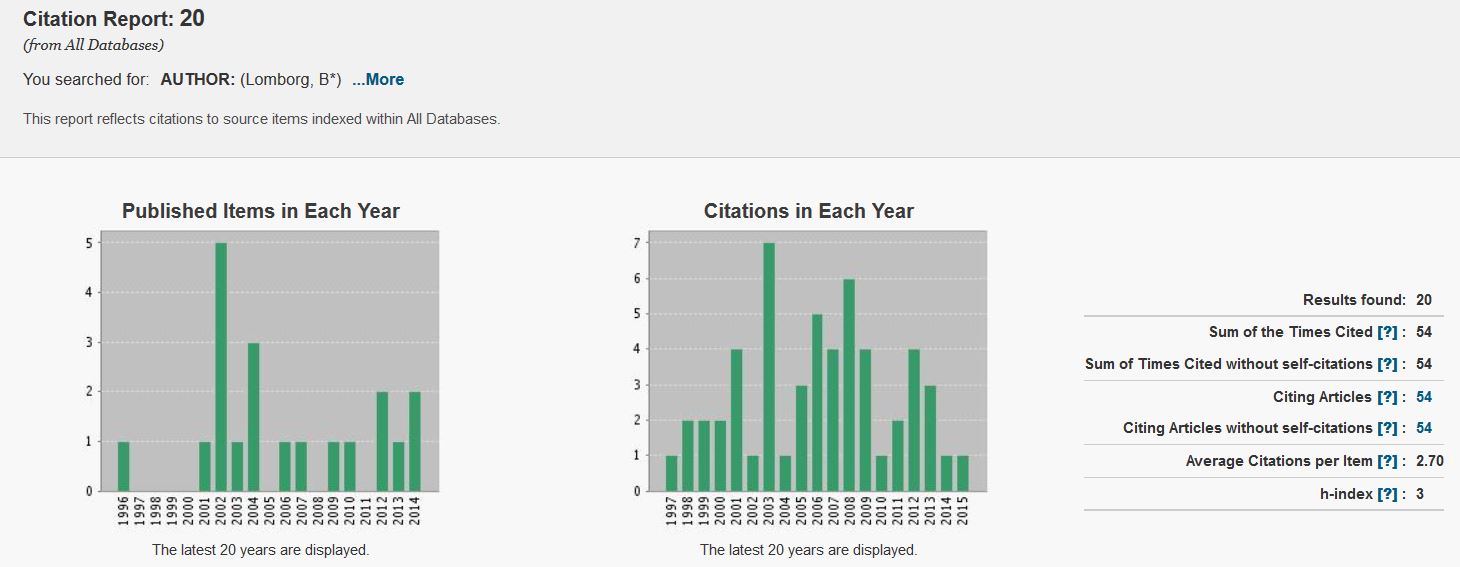
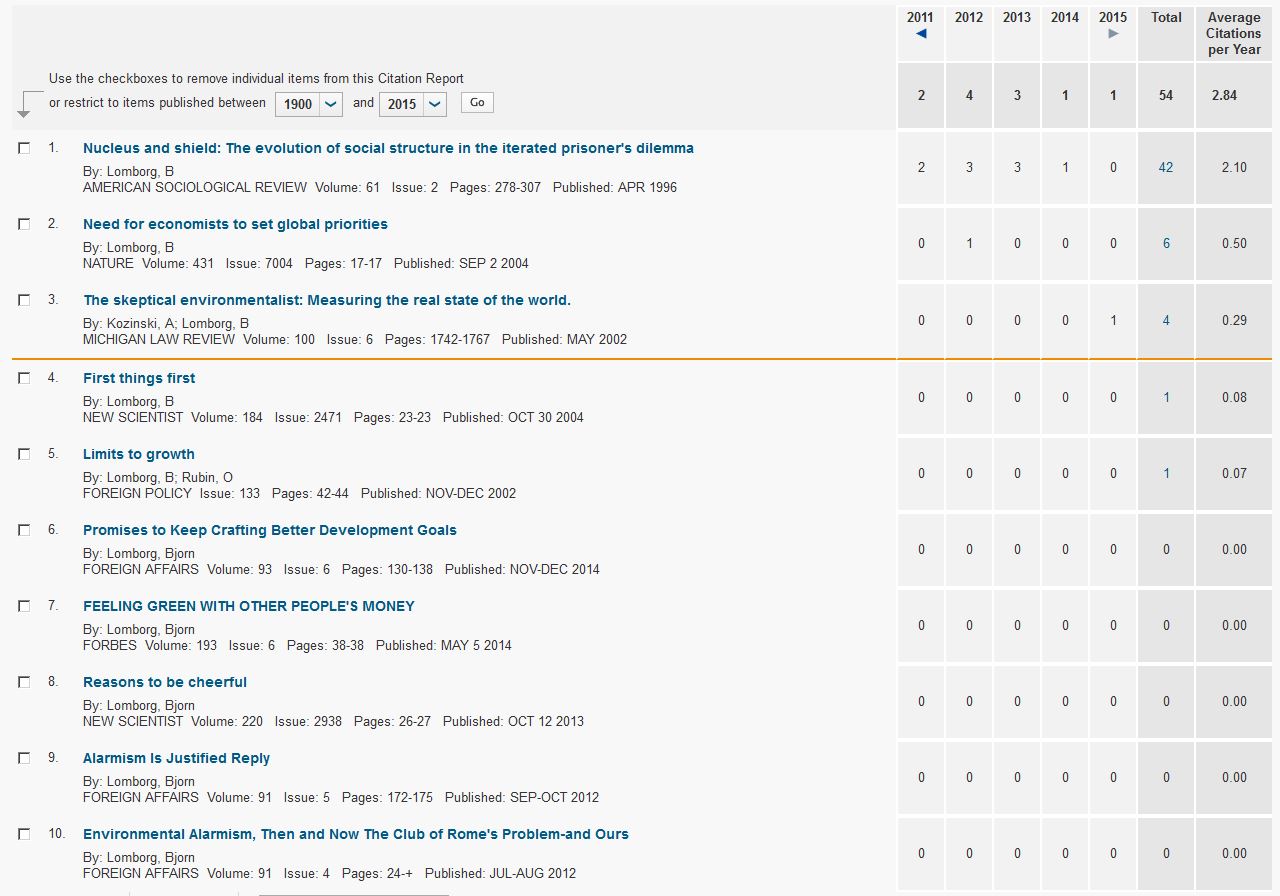
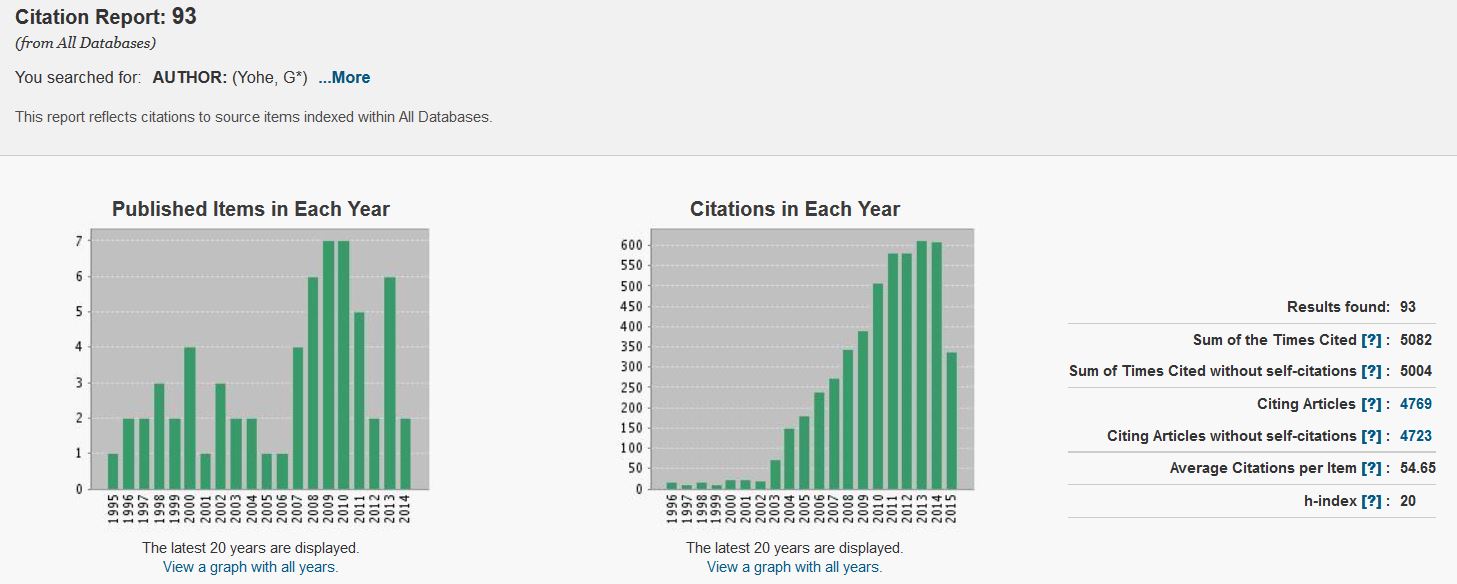
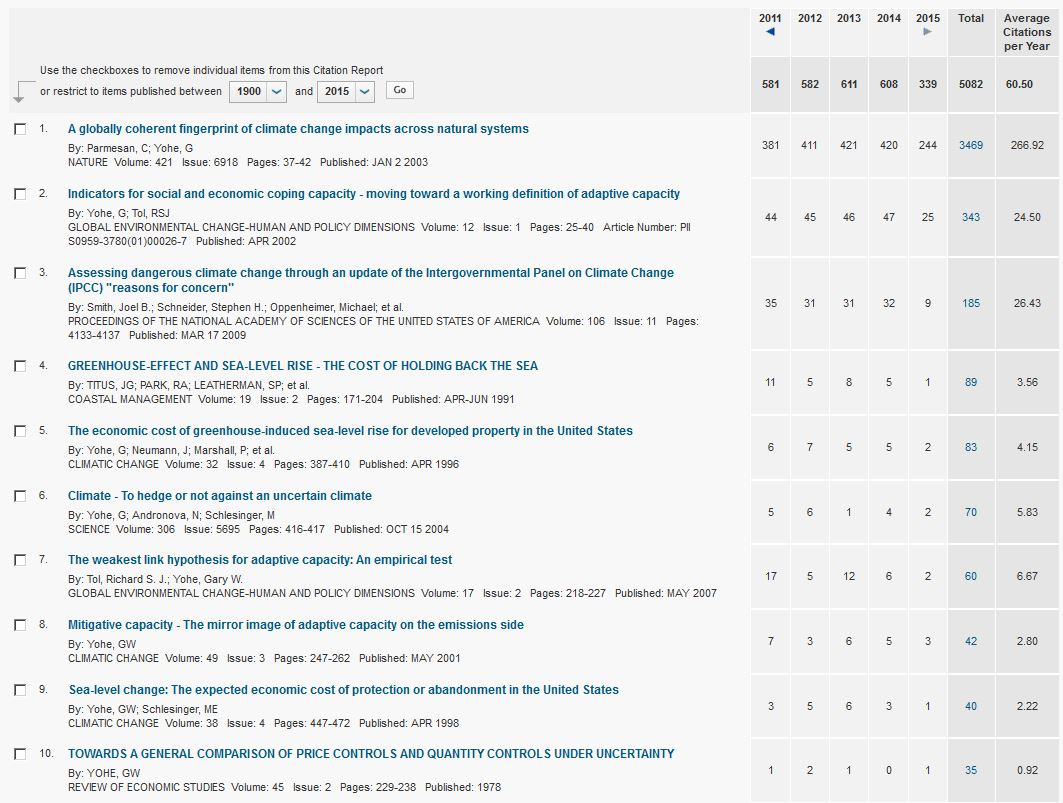
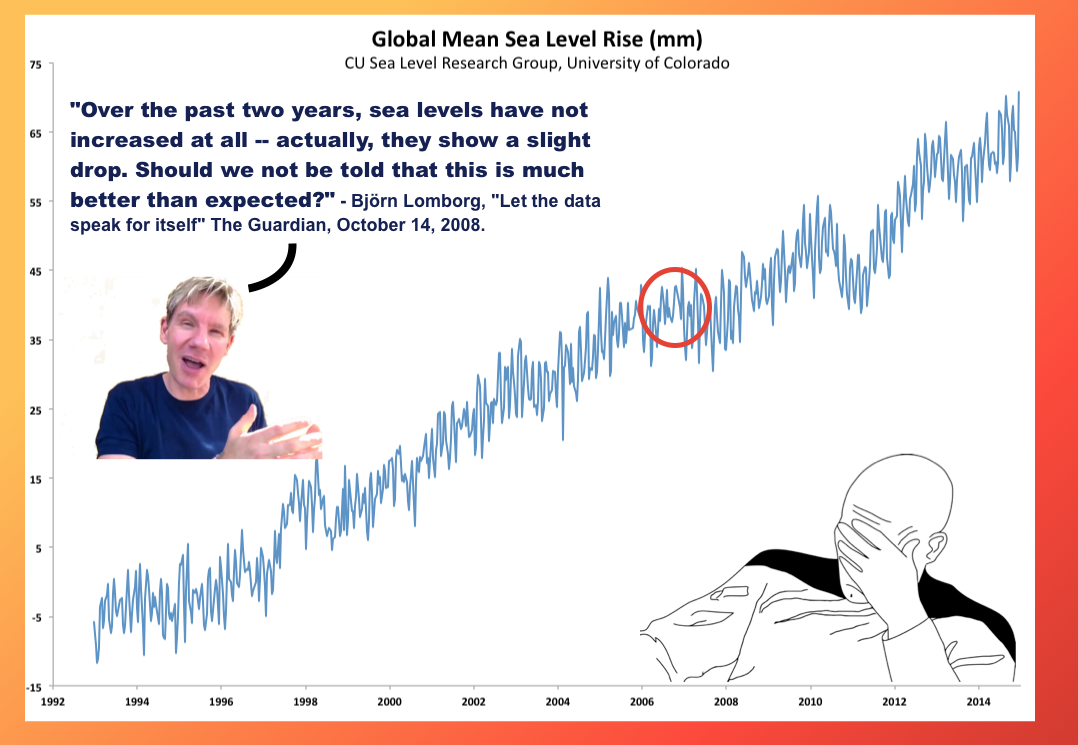
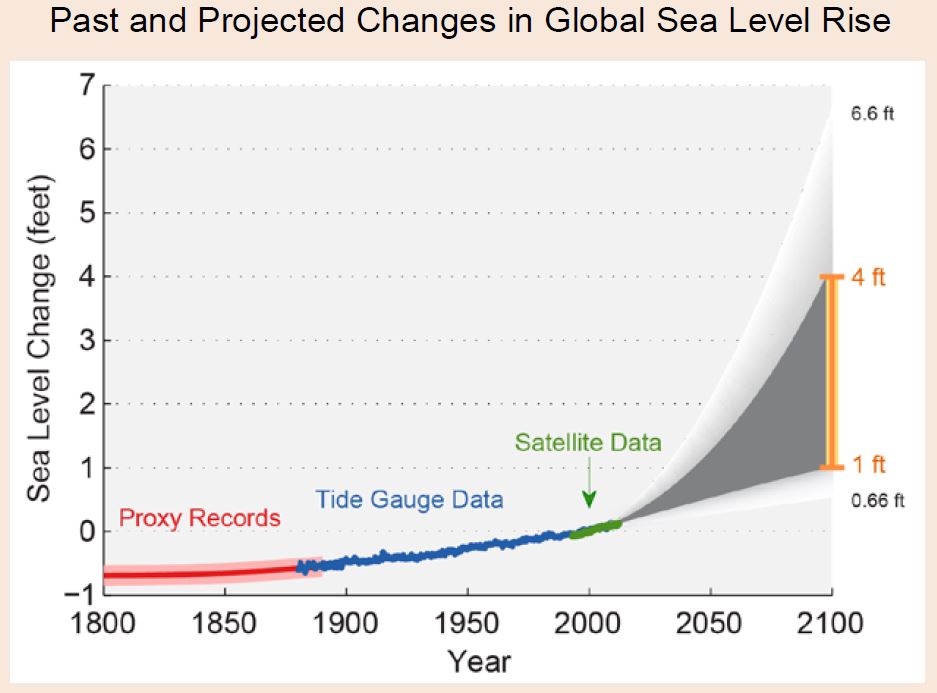
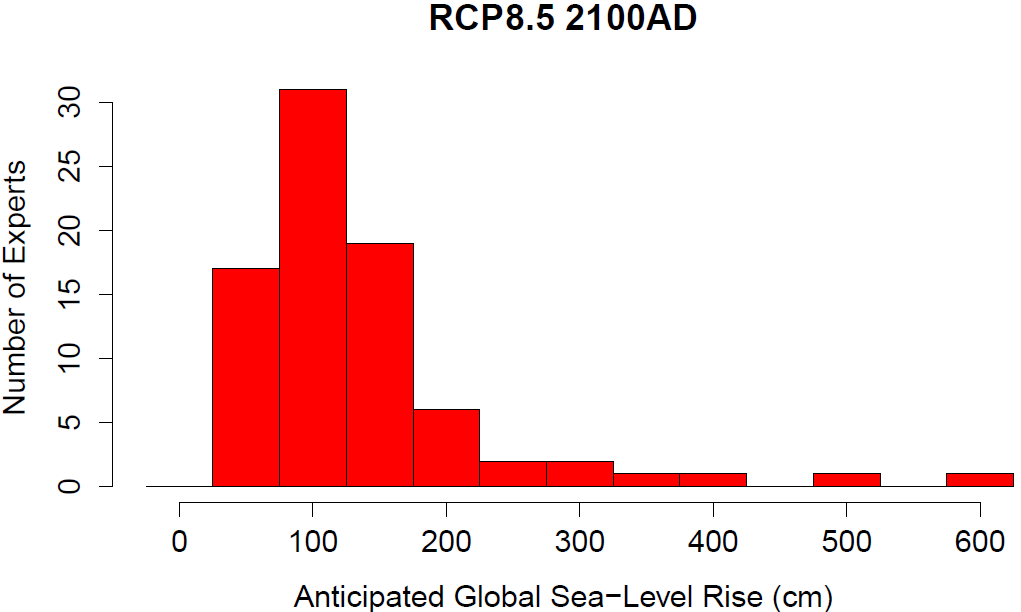
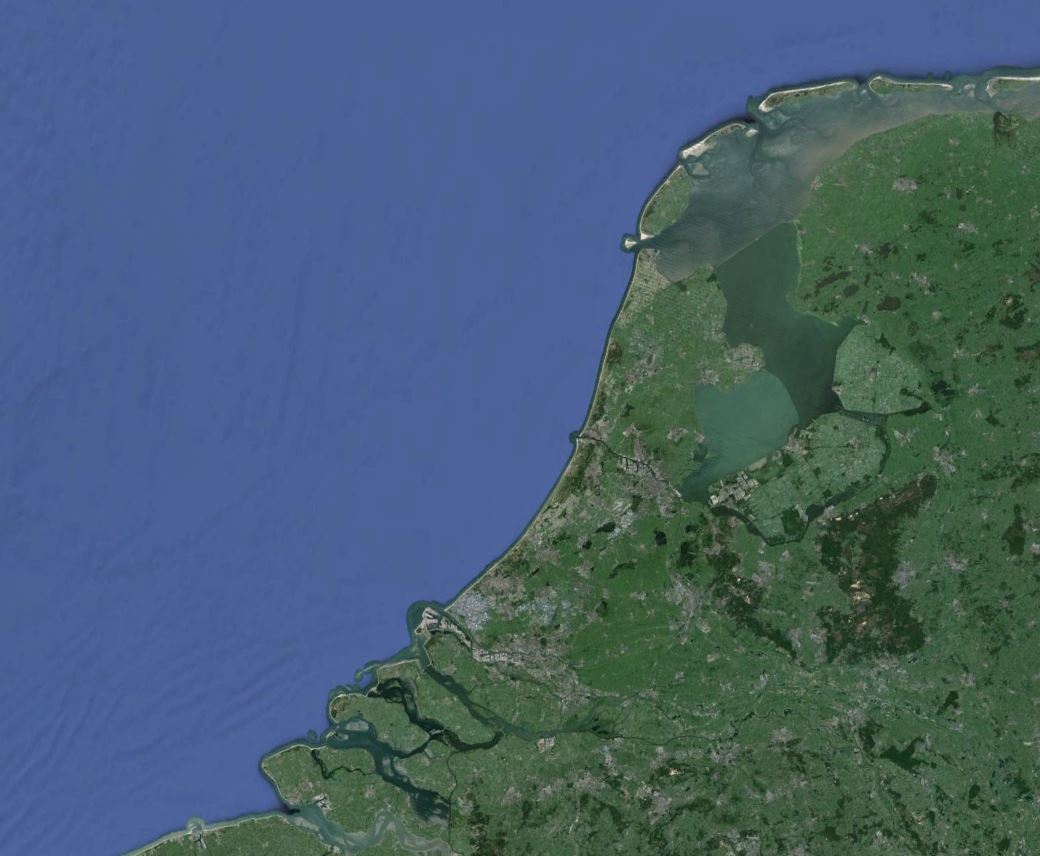

It took us Dutch over a 1000 years to restructure our country and improve our coastal defenses (which even as recently as 62 years ago wasn’t up to standards, remember the 1953 disaster?). And the Dutch coast and country looked very different a thousand years ago and has changed shape many times over the course of the succeeding centuries. The fact that the Dutch coast now looks more managable is exactly because it has been managed for centuries.
https://en.wikipedia.org/wiki/Netherlands#/media/File:800nc_ex_leg.jpg
I doubt that Bangldeshi coast is vastly more difficult to defend. We as Dutch made our coastline easier to defend. Obviously money and wealth come into play, but if we could do it, then in principle they could do it as well.
[Response: I would disagree (and in fact I consulted a Dutch sea-level expert before publishing this article who approved of my final text). Your linked graph of Holland in 800 AD shows pretty well a similar nearly straight coastline, already largely naturally protected by dunes (yellow in the map) from the sand that gets transported along this coast. I’ve played a lot in those dunes in my childhood in Holland. Holland does not have the massive fluvial flooding problem from monsoon rains that Bangladesh is suffering from – which is made worse when sea level rises due to the backwater effect, which reaches far inland along the many river channels in the delta. And Holland does not get tropical cyclones either. -stefan]
So Lomborg is apparently cynical about the victims of sea-level rise in the years 2100 and beyond… Why isn’t it also true that others are cynical toward the victims of all manner of third-world effects “today” that can be most quickly mitigated by rapid deployment/access to energy installations that also happen to have the effect of increasing greenhouse emissions?
Is there supposed to be an arbitration between the two concerns, automatically declaring one to be the loser in the eyes of science? Is there really exactly zero merit, and only ‘bad faith’ or ‘cynicism’ to favor the present over the future as it relates to 3rd world policy– even if it’s guaranteed that climate change will do all the damage that’s expected?
It is sad that real scientists have to use their valuable time to debunk deliberate and irresponsible misinformation, but I for one am grateful that Lomborg and others of his ilk are not allowed to publish their dishonest propaganda unchallenged.
Thank you Stefan.
Jenne,
“Bangladesh in contrast is largely a river flood plain with major problems draining the monsoonal waters to the sea (closing the coast with a huge dike is not an option) combined with storm surges from tropical cyclones.”
To a hydrologist, Bangladesh looks like the Netherlands in the same way that the Russian steppe looked just like the Netherlands to Napoleon Bonaparte. Tiny but significant differences in geography and climate.
An amplification of the useful comparison between Yohe and Lomborg. Yohe has spent his entire career at Wesleyan University (Connecticut). For non-American readers, Wesleyan is a small US university which is primarily devoted to undergraduate teaching. I’m sure that for much of his career, Yohe had a substantial teaching load. Wesleyan has few grad students, so he did the teaching, grading, etc., himself. As pointed out above, Yohe is a productive scholar. His Web of Science h-index, one frequently used measure of scientific impact, is a solid 20. Lomborg’s is a derisory 3. Yohe has also been involved in IPCC reports and advising the US government.
So, Lomborg is much less productive than an academic economist, though clearly a talented and hard working one, who devoted much of his life to undergraduate teaching.
Criticizing Lomborg’s publication record smacks of ivory tower elitism and shouldn’t be part of a proper debate: many scientists like R B Woodward and Richard Feynman had only a handful of papers to their name. In addition criticizing his opinions is also not productive. What matters is whether he’s in a position to spur students to engage in respectful, spirited and thoughtful debate instead of just doling out readymade information to them. To me it seems Lomborg is perfectly capable of doing this. The idea that we should only have people in universities who uphold the status quo is regressive and goes against what a university should stand for, namely, a co-existence of opposing viewpoints.
[Response: Feynman’s list of publications:
http://users.physik.fu-berlin.de/~kleinert/feynman/feynmanpub.htm
A key concept of a university is that people present and discuss opposing viewpoints supported by proper evidence – not go out to present misleading arguments to a lay audience who could not double-check, because they are not going to find the data or read what the IPCC actually wrote. -stefan]
Jenne, the fact that the Dutch had a 1000 year head start doesn’t alter the main point: the Dutch coastline today is far easier (and less expensive) to defend against future sea level rise than is the current coastline of Bangladesh, and Bangladesh must respond within this century, not within the next millennium.
@Jenne 1
“I doubt that Bangldeshi coast is vastly more difficult to defend.”
If we ignore difficulties of scale, cost and cyclones, perhaps. But considering those, we indeed encounter a problem best described as “vast.”
The rivers of Holland were not fed by monsoon rains which flood the region every year. Stefan has pointed this out in his article. Can you really channel the river flow so that escapes into the ocean neatly and not make flooding worse. You must remember that monsoon rains will also intensify.
http://www.irinnews.org/report/78925/bangladesh-early-monsoon-floods-point-to-climate-change
Jenne: If the many billions of dollars it would take to bring the coast of Bangladesh up to the Dutch standard was spent by each country in the world to reduce emissions,then such vast coastal engineering projects would not be needed.
Jenne, it is precisely money and wealth sufficient to completely reconfigure its coastline that Bangldesh lacks. It also lacks the necessary time. It simply does not have the 1000 years that it took the Dutch to achieve its manageable coastline.
Jenne, your comment makes no sense: you spend a paragraph explaining how Holland currently benefits from “centuries” of management.
Then you say that you “doubt that Bangldeshi coast is vastly more difficult to defend”, despite the fact that it has NOT had those centuries.
“Is” is plainly not what you mean to say, as according to your logic the comparison should not be between today’s Dutch coast and Bangladesh’s, but between the latter and the original Dutch coast.
– See more at: https://www.realclimate.org/index.php/archives/2015/08/bjorn-lomborg-just-a-scientist-with-a-different-opinion/?wpmp_tp=1#sthash.aneHBN56.dpuf
[too strong]
@6 [“Criticizing Lomborg’s publication record smacks of ivory tower elitism and shouldn’t be part of a proper debate: many scientists like R B Woodward and Richard Feynman had only a handful of papers to their name.”]
Well, the fact is, for better or worse, decisions on hiring in academia are made in large part on the basis of publication record. So, why should hiring Lomborg be made on a very different basis?
Furthermore, while scientists like Feynman may have not published a huge quantity of papers, their papers had a huge influence and this would have indeed appeared in the metric that is discussed here of looking at the number of citations in the peer-reviewed literature. (See here for Feynman’s numbers in google scholar: https://scholar.google.com/citations?user=B7vSqZsAAAAJ&hl=en )
Lomborg used to be mentioned in local college courses on global warming, cited as an example of a differing position – Now he may be better defined as a promoter of his own opinions. This is good for science… thank you for the debunking.
Lomborg is often labeled an economist or environmentalist, but is neither.
In addition, climate is just one case of Lomborg’s priorities, which consistly preserve profits over health.
Stefan,
You don’t cite one of the most detailed takedowns of Lomborg: Howard Friel’s 272-page The Lomborg Deception, published by Yale University Press in March 2010.
In one chapter, Friel pursues the references that Lomborg cites in the first chapter of his The Skeptical Environmentalist, titled “Things are Getting Better,” about 250 citations in all. Friel decides to go after only the first 29. To report his analysis of those 29 takes Friel 9,000 words, and they thoroughly expose Lomborg as a charlatan. Friel sums up: “To similarly review all of the 2,930 endnotes in Lomborg’s book would require a 900,000-word book comprising more than 100 chapters the size of this one.” Such a book would have had only one reader, who would no doubt have responded with an even longer rebuttal. We can be thankful Friel knew when to quit.
Also, note the last sentence of Lomborg’s Guardian piece: “Should we not be told that this is much better than expected?” This is another example of the deceitful rhetorician at work.
Jenne,
Thank you for illustrating exactly the type of intellectually and spiritually bankrupt argument [edit – too much] Lomborg is guilty of. Since you say “I doubt that…” you seem every bit as qualified to speak about hydrology and related subjects as Lomborg is to speak about the many aspects of climate he pretends to be expert on.
If the Bangladeshis had a thousand years and several hundred billion dollars, no cyclones and no monsoons maybe they could adequately prepare for this one aspect of climate catastrophe, although they would need even more time and money to help with the unbearable heat, the droughts, the fires, the crop failures, the ecological disruptions and the other effects that are here and intensifying. It’s flabbergastingly callous, not to mention utterly delusional, to say “in principle” when whatever principles you may be thinking of have nothing to do with the reality of the time limits imposed by changing climate,intensifying storms and melting ice, or the gap between the enormous historic and current wealth of the Dutch, and the dire poverty of the Bangladeshis, and say “we did it, so can they.”
You seem to be taking the conservative position of denying reality, and blaming the victim, disregarding the fact that most poor people in the world are that way because they’ve been systematically impoverished by force and economic extortion, in the process of enriching the West, including the Dutch. You seem, deliberately or not, to not understand that cooperation is necessary, as we’re all in this together. We all have to maintain social order, education, production of necessities, and cohesiveness so we can implement the solutions needed to avoid the inevitable result of unmitigated climate catastrophe—the end of civilization and the extinction of millions of species.
Those solutions are: replacing fossil fuel use with efficiency, conservation, changed lives, and clean renewables; transforming chemical industrial agriculture to low-meat organic permaculture; reforesting the planet. We also need to equalize economically and politically, in order to provide that cohesiveness and stop the rich from their current outsize exploitation of the Earth; to emphasize education and empowerment especially for women, and to make sure everyone has security in sickness, hard times and old age. These are the things that have been shown to reduce population growth most effectively, although we may be past that.It may not be something we have to worry about any more, as rising death rates due to climate cataclysm (now up to 400,00/yr) may take care of that without our help. Above all we need to acknowledge and start to heal the psychological conditions that are at the foundation of all our relational problems with each other and with the rest of nature.
I am always impressed by the deep and abiding concern for the poor exhibited by the do-nothingists as soon as the subject of climate change is mentioned. Sadly, this concern seems to pass long before they get around to actually doing anything to help the poor, or indeed finding out what it is the poor actually need most.
Were they to do so, they would likely be shocked–shocked, I tell you–that very few of the biggest problems the poor experience are likely to be solved by greater availability of fossil fuels. The poorest of the poor tend to rely on wood or animal dung for cooking even when propane is available, because they cannot afford either a propane stove or propane fuel. They rely on their own feet or at most a bicycle for travel even when there are taxis (or indeed roads), because they cannot afford bush taxi fares.
Perhaps the reason that these facts continue to elude them, is because despite their deep and abiding concern for the poor, they don’t seem to have ever spent much time with them.
Stefan, I have no doubt as to the potential for sea level rise. My concern is, we do not seem to be gaining anything from the natural analogies of SL decline in 2010 and the hiatus of 1998-2013.
As much energy as is currently derived from fossil fuels can be derived by moving surface ocean heat through a heat engine to a depth of 1000 meters.
The movement of heat to 300 meters by the trade winds is suggested as the reason for the hiatus.
At 1000 meters the coefficient of expansion of sea water is half that of the tropical surface and heat at that depth can no longer migrate towards the poles to melt ice? At least not for 250 years since Munk suggests the return rate of heat from the abyss is about 4 meters/year.
The 2010 SL decline was the result of major transfers of ocean volume to the land in the form rain.
Energy created mid-ocean needs to be converted to an energy/water carrier like hydrogen. Fourteen terawatts (which is believed to be the potential for ocean thermal energy conversion) would convert 16 trillion kgs of water to gas (if my calculation is right) and when reconstituted on land to produce energy would generated 600 gallons of water for every person on the planet.
There would be a small SL benefit from this transfer but probably more importantly this water would negate the necessity to pump aquifers, which is the third contributor to SLR.
An electrolysis process developed by a Lawrence Livermore team also sequesters CO2 and neutralizes ocean acidity. https://www.llnl.gov/news/livermore-scientists-develop-co2-sequestration-technique-produces-supergreen-hydrogen-fuel
Again if my calculation is right, electrolysis using 14TW of power could sequester 79 billion metric tons of CO2 annually.
Gavin’s quote from Sherwood Rowland in his TED talk, “What is the use of having developed a science well enough to make predictions if, in the end, all we’re willing to do is stand around and wait for them to come true?” keeps ringing in my head.
Salamano asks: “Why isn’t it also true that others are cynical toward the victims of all manner of third-world effects “today” that can be most quickly mitigated by rapid deployment/access to energy installations that also happen to have the effect of increasing greenhouse emissions?”
Because Salamano’s assumed greenhouse gas emitting energy solution is not the only one available, and it may not even be the most quickly deployed. In any case, I don’t see Lomborg or Salamano lining up to actually pay for building all these new coal-burning thermal power stations and the distribution grid to deliver their electrons to the poor, nor their monthly bills, so Salamano’s question rings so very hollow. There is nothing as cynical as using the plight of the poor for mere rhetorical gain.
re: #6 Mr. Burrito,
Feynmann had more than 100 scientific publications, cited tens of thousands of times, and… oh yes, the small matter of a Nobel Prize (= impact factor of roughly infinity). Care to try again?
I read Kare Fog’s article on Lomborg. At the the end Fog asks why Lomborg does it, and it reminds me of something a lawyer told me.
This lawyer worked to protect the environment, and he said the lawyers on the other side knew what they were doing was wrong. He went on to say there were a few lawyers who were hurting the environment, but were convinced that they were doing the right thing.
These people were the most dangerous type of advocate, a true believer in a wrong cause.
If your are building a political attack piece on Lomborg I suggest it may be a good idea to reduce the use of incorrect propaganda material.
The eye catching sea level image with the Star Trek character has a fabrication of Lomborgs quote that is seen to be wrong when in comparison to his full quote you show above it.
Did you know this?
If you did, why do show it this way?
Are words this easily malleable to you here?
[Response: You seem to be unable to read. The quote is accurate. -gavin]
Quantumburrito:
That idea is also a straw man.
As Stefan explained here Lomborg doesn’t merely have an “opposing viewpoint” – he presents a “viewpoint” that as anyone who has a functional understanding of very basic climate science knows is scientifically invalid.
For example Lomborg’s “viewpoint” that “over the last two years, sea levels have not increased at all – actually, they show a slight drop. Should we not be told that this is much better than expected?” demonstrates:
1) Willful manufacturing of scientifically-invalid anti-science propaganda, and/or
2) A deep and fundamental ignorance in basic climate science, as well as statistical trend analysis more generally.
Only someone not literate in basic climate science would honestly characterize Lomborg’s “viewpoint” there as merely an “opposing viewpoint” instead of what it is: scientifically invalid.
Quantumburrito,
As far as I’ve been able to see, the ivory tower elitism is coming from Lomborg more than elsewhere. His opinions are hugely popular and have garnered wide support, which satisfies a clientele with academic arguments for a political stance ranged against accepting scientific uncertainty ranging on the dangerous side.
What I think you meant to say was that since you disagree with the conclusions of a large majority of the best expertise available, you regard him as a champion of the downtrodden who would replace understanding and true skepticism with the large mirror universe of less qualified and often dishonest material that attacks two centuries of growing worldwide understanding.
The namecalling is endemic, but not accurate.
Quantumburrito:
“Criticizing Lomborg’s publication record smacks of ivory tower elitism and shouldn’t be part of a proper debate: many scientists like R B Woodward and Richard Feynman had only a handful of papers to their name.”
Someone had big hands, then.
Feynman’s list of publications:
http://users.physik.fu-berlin.de/~kleinert/feynman/feynmanpub.htm
Let the data speak for itself. The sea level rise over the past 10 years is statistically similar to that for the past 10 years, even if it is slightly lower in absolute magnitude. There has been neither acceleration nor deceleration over that time frame, although the data has become noisier.
[Response: A recent paper in Nature Climate change by leading experts including John Church now finds an acceleration of sea-level rise even in the satellite altimeter record (in the longer tide gauge data it is obvious). This new finding still needs to be digested by the expert community so I reserve my judgement on this (which is why I did not mention it in my article). -stefan]
Woodward, had an H number > 60. The Woodward Hoffman papers have each been cited multiple hundred times
Quantumburrito should be banned unless apologies are forthcoming.
Quote: “Criticizing Lomborg’s publication record smacks of ivory tower elitism and shouldn’t be part of a proper debate: many scientists like R B Woodward and Richard Feynman had only a handful of papers to their name.”
Perhaps it depends on your definition of “handful”. Others have commented on the actual publication record of Richard Feynman. For Woodward: “During his lifetime Woodward authored or coauthored almost 200 publications, of which 85 are full papers, the remainder comprising preliminary communications, the text of lectures, and reviews. The pace of his scientific activity soon outstripped his capacity to publish all experimental details, and much of the work in which he participated was not published until a few years after his death. Woodward trained more than two hundred Ph.D. students and postdoctoral workers, many of whom later went on to distinguished careers.” (from Wikipedia. fuller biographies are available. And then there was the small matter of a Nobel Prize in 1965 as well as many other awards and honors.
Thanks for the edit of my intemperate comment at #13. I still think the comment was factually accurate, but perhaps it would not have been helpful, had you allowed it to stand.
And it would have been unprovable, as one cannot be sure of what Mr. Lomborg himself thinks–if that last is really the word I want.
Q 6: To me it seems Lomborg is perfectly capable of doing this. The idea that we should only have people in universities who uphold the status quo is regressive and goes against what a university should stand for, namely, a co-existence of opposing viewpoints.
BPL: Good idea! And along the same lines of thought, let’s hire creationists in university biology departments, flat-Earthers in geology departments, and Velikovsky freaks in astronomy departments. Why have uniform points of view? Let’s let any raving lunatic in, qualified or not! There is no middle ground. To do anything else would be stifling enforcement of orthodoxy.
To add insult, Lomborg is being funded millions in taxpayer money by the Abbott government in Australian and the Danish government.
http://www.thelocal.dk/20150716/denmark-to-fund-climate-skeptic-bjorn-lomborg
Denmark because of Greenland oil (presumably).
tlitb1, and Gavin,
Actually, titb1 is correct. One iteration of the quote uses the word “last”, the other uses “past”. So obviously [Satire Alert] we should disregard the entire article. And equally obviously, because of this, all of climate science is suspect if not downright fraudulent.
It would be nice if those climate deniers who post here did so using their own names, so the balderdash they spew would be associated with them.
Dan: Given the variability of the data, why would you expect two successive decades to have different rates of increase? There would have to be a phenomenal change for them to be statistically different.
One thing in your article is unfair, Stefan: you say Lomborg is scarcely cited, focussing on citations of his journal articles. But Bjorn L did write
“The skeptical environmentalist: measuring the real state of the world
B Lomborg – 2003” which according to google scholar is
“Cited by 2329”.
That’s undeniably a high-impact piece of work.
It seems a lot like cherry picking to me to leave out that publication when measuring how cited his work is!
[Response: You certainly have a point that his book is very very popular. But Stefan was not arguing that point. The question is whether there is any objective evidence whether his scientific views are taken seriously by other scientists. You can argue that to use a standard science citation index to measure this is “elitist” if you want, the fact remains that this is the measure universities use, and the complain was that he was being treated unfairly by the University system in Australia. Clearly, that’s not the case.–eric]
Wikipedia has a long entry on Lomborg. It seems that his only claim to importance is two books published by the Cambridge University Press. It would be interesting to know what went on behind the decisions to publish the books. I have long been appalled at some of junk I’ve seen that the Press publishes.
“tlitb1” writes:
“If your are building a political attack piece on Lomborg I suggest it may be a good idea to reduce the use of incorrect propaganda material.
The eye catching sea level image with the Star Trek character has a fabrication of Lomborgs quote that is seen to be wrong when in comparison to his full quote you show above it. ”
Let’s see:
* “fabrication of Lomborgs quote”:
“over the past two years, sea levels have not increased at all – actually, they show a slight drop. Should we not be told that this is much better than expected?”
* the corresponding sentence in the Lomborg’s original:
“[Moreover,] over the last two years, sea levels have not increased at all – actually, they show a slight drop. Should we not be told that this is much better than expected?”
So these two sentences LOOK IDENTICAL, but look carefully, the underhanded climatists made an insidious” fabrication” – when making the image they typed “the past two years” instead of, imagine that, “the last two years”! This changes everything! What a blatant fabrication, what a propaganda.
No wonder that our friend “tlitb1” based on this accuses Stefan of “political attack”, “propaganda” and “fabrication”, and asks him and the rest of us poignantly:
“Did you know this? If you did, why do show it this way?
Are words this easily malleable to you here?”
Thank you, o Great “tlitb1”, the Defender of Mighty Lomborg.
The data does speak for itself. It speaks arithmetic.
” A 30-year data set should provide a trend with a +/- 1.5 mm/yr confidence interval; a 60-year data set should provide a trend with a +/- 0.5 mm/yr confidence interval.”
http://tidesandcurrents.noaa.gov/sltrends/sltrends_update.htm?stnid=8518750
http://tidesandcurrents.noaa.gov/sltrends/images/conf95.png
How much confidence based on a ten-year data set? Hmhmmmm.
David J C MacKay, Lomborg’s “The Skeptical Environmentalist” is a book published for popular consumption, not a scientific paper published in a peer-reviewed journal. Had it been so submitted for publication it would have been rejected for containing a plethora of scientific errors and worse, as James Powel pointed out in comment 17 up thread. Citations of rank shite passed off as scientific comment are worthless. I will grant you that Skeptical Environmentalist was high-impact, although not in the way you might think.
I take issue with the idea that anyone is not a scientist or is not qualified to be a profressor because they stop publishing in academic journals or even if they never publish after receiving a graduate degree in a scientific field. Some don’t like to believe it, but there are excellent scientists that choose more applied career paths or choose positions where teaching is emphasized over publication. These scientists have real impacts outside of Web of Science.
The idea that a priori someone has little to offer because they have published little is counter-productive in science. A critical evaluation of an idea is on its merits.
That said, Lomborg clearly not a scientist based on the content of his arguements, well-published or otherwise. Maybe just dial down the vanity a notch.
Of course, the whole premise of comparing the cost of protecting the coast of Bangladesh with the cost of reducing fossil fuel use in the industrialized countries is dishonest. No matter what the result of the comparison, this will always be a great deal for the industrialized countries. It’s not like they have to foot the bill for Bangladesh, regardless of how high it turns out to be.
Richard,
I would not. Nor would I expect the coming decades to deviate either. However, there are those proclaiming that it will change substantially in a very short time.
Why does everyone always assume the Dutch are safe? They can handle one – maybe two – meters of sea level rise, but beyond that, they will be joining the crowd of environmental refugees.
How much confidence based on a ten-year data set? Hmhmmmm.
Chuckle!
“Some don’t like to believe it, but there are excellent scientists that choose more applied career paths or choose positions where teaching is emphasized over publication.”
If they are not publishing, they are not working as scientists, but as teachers, technologists, communicators or whatever. And there’s nothing wrong with that. But the literature is the crux, and if you’re not in the literature, well….
(Well, OK, you can imagine a case where someone does fantastic experimental work which for some reason isn’t published, but though theoretically possible it’s not very realistic. And if it *never* gets published, it remains without consequence. Consider the case of Gregor Mendel (who *did* publish, albeit in a rather obscure journal–still, it allowed his work to be found in a literature search forty years or so later.))
I find it really disconcerting that you employ (attack the man) methods in trying to get your point, gain sympathy for your stance, across.
Stick to the science, (such as it is)or face up and be counted.
[Response: I did not “attack the man”, but rather I criticised particular statements, with sources provided. The credibility of any person taking part in public discourse can be judged by their publications and other public statements. By what else? -stefan]
Let me try to understand that expectation — would that be because you don’t believe CO2 can trap heat, so you don’t believe the planet can be warming due to rapidly increasing fossil fuel use, so you don’t believe ice caps and glaciers can be melting faster due to increasing warming, therefore logically you can’t believe that sea level could begin to rise faster than in the past, because you see no way possible that water is being added to the oceans at any faster rate than in the past?
A syllogism: deductive reasoning to arrive at a conclusion based on two or more propositions that are asserted or assumed to be true.
Unfortunately the book in question here is a bit of a classic for your skeptical environmentalists and I know several people who have it in their home and often refer to it. It is a shame that it is a book such as it is as the public should be allowed to purchase such books and think what they are reading is a statement of facts to back up peoples opinion and conclusions
The trouble is that so many popular science books might contain such alleged facts that backup options and conclusions that cannot be trusted.